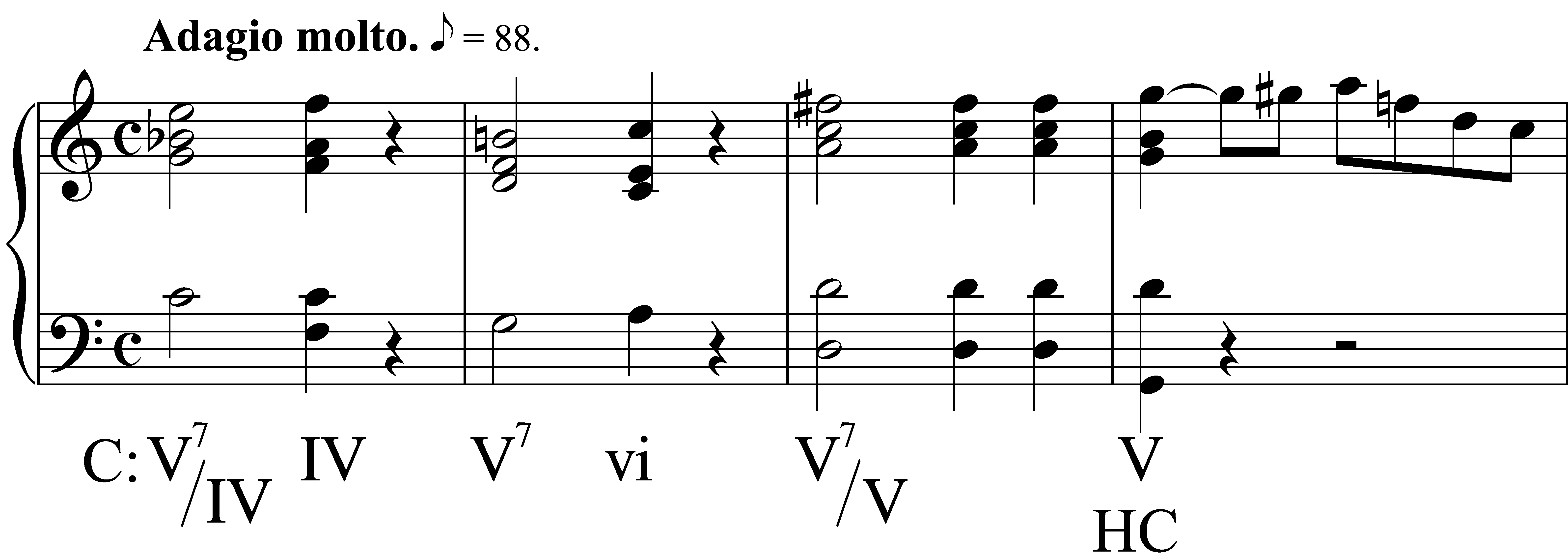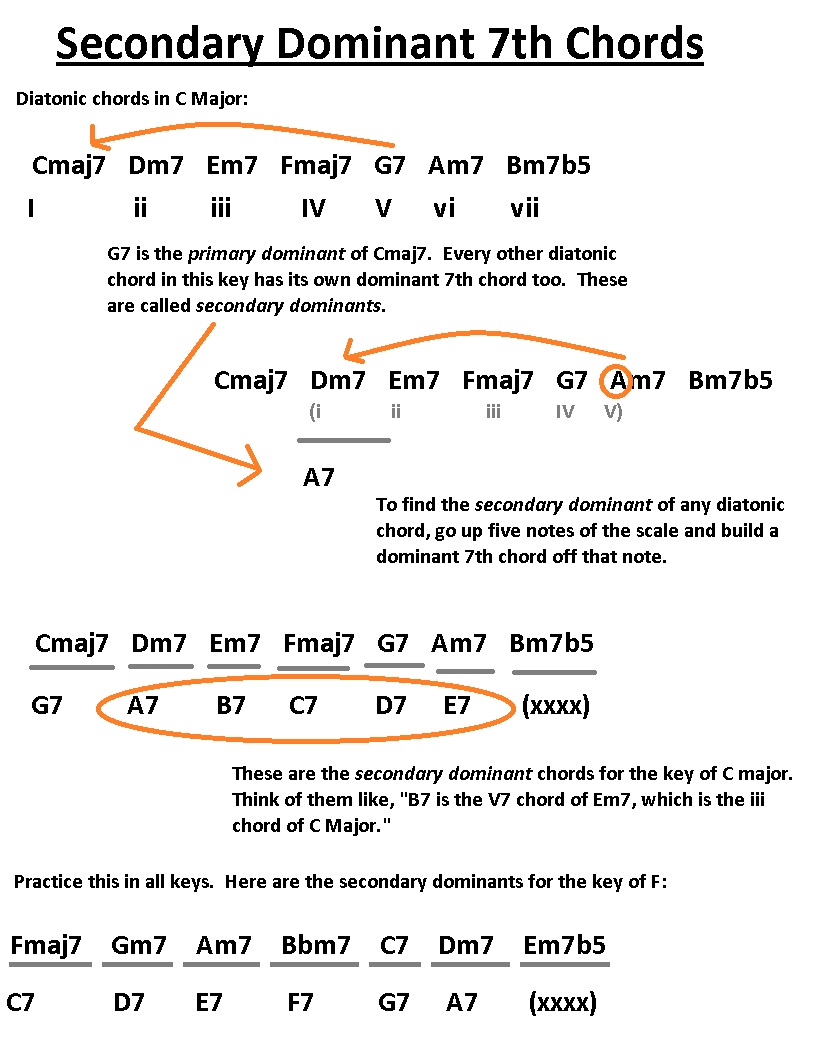Underrated Ideas Of Info About How To Write Secondary Dominants

In c major, that means you should choose from c, dm, em, f, g, am, and bdim (that last one.
How to write secondary dominants. A secondary dominant chord can be written as a single roman numeral (e.g. We write v / iv to indicate a secondary dominant of the iv degree. For example, in the key of c major, the dominant chord is g major,.
The only thing that is new is the accidentals. In this video we learn how to use secondary dominants as a powerful tool for modulating in your music. Watch the video above for a detailed breakdown of the dominant of.
Spice up your chord progression with a secondary dominant. Sandman does this to an extreme: We can perform a similar change in c minor by turning the second chord into a major chord (although we have to add 2.
A secondary dominant is a dominant chord that does not resolve, but instead resolves to a chord built from a different tone. First determine the note that is the root of the chord being tonicized (the chord to the right of the slash). A secondary dominant is when we take a chord of the key, that is not the 5th degree chord, and we turn it into a dominant chord, ideally a dominant 7th chord.
The secondary function refers to the use of chromaticism through chords that are not in the key in shifting the listener’s focus to chords other than the tonic chord. Ii, or ii7 for a supertonic chord), or it can be written as v/ chord, for example v/v means “dominant of.
Let’s take that d major scale from above as. Yes i just used the word dominant three times. What are secondary dominants?
In this guitar lesson you will learn how to. We refer to these chords as v of iv or v of v, etc. Now, let's do the same with the v degree chord.
A secondary dominant is (probably) the most common way to modulate to a new tonal center. It's a basic concept and should be part of every composer's palette. To write a secondary dominant, use the following procedure.
First determine the note that is the root of the chord being tonicized (the chord to the right of the slash). In terms of nomenclature, it is customary to use the notation v7/v7 or v7/v to highlight that it is a secondary dominant for another dominant (of the fifth degree). The most common secondary dominant is the v/v, which is the dominant of the dominant chord.
© 2023 google llc. Secondary dominants are not limited to major keys. First, write a chord progression that’s entirely diatonic to some key.


















